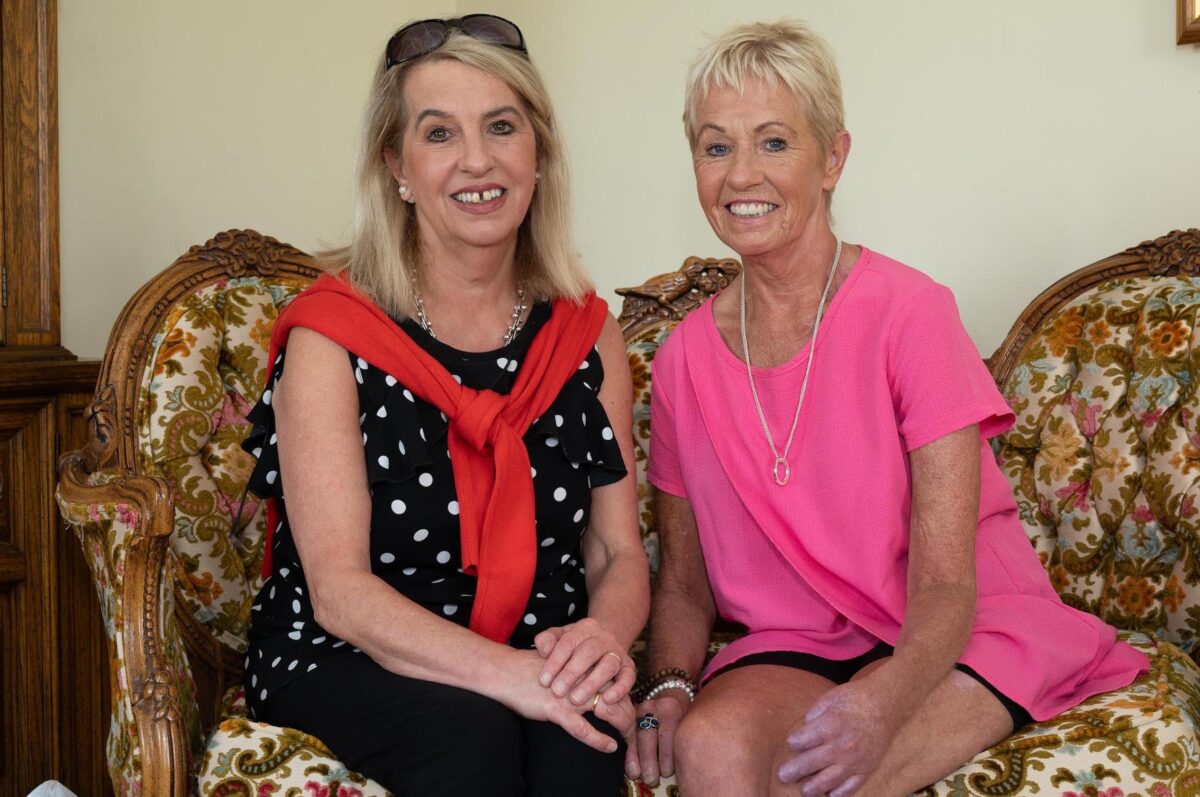Main pic: Moninne Bradley (right) at home with her sister, Orla Noonan. Photo Clive Wasson
As World Sepsis Day approaches, one Donegal family is urging the public to know the signs of the silent killer.
Moninne Bradley, from Killygordon, was left fighting for her life last year as the result of the rapid spread of the reaction.
Had it not been for the quick actions of her sister, Senior Nurse Orla Noonan, she would not have survived.
Sepsis is a life threatening condition caused by an infection that affects the organs and kills one in five people who develop it.
In the weeks leading up to her collapse, Moninne had been fighting an infection and had taken a course of antibiotics and steroids to combat it. When she later developed spots on her throat, she believed it was a side effect of the antibiotics.
On the day before her hospitalisation, Moninne went to work as usual. Still concerned about a swelling that appeared on her neck, she intended to return to her GP as a precaution the following day.
“I had been fighting an infection for a few weeks but was still going to work and getting on with things. I thought I might go back to the GP to be sure, but at 9pm that night I took very ill,” she recalls.
Her sister Orla, a nurse in Letterkenny University Hospital, was keeping a close eye throughout. However, despite her years of experience, she was left stunned by the sudden and rapid deterioration Moninne experienced.
“I saw her at 6.30m and she was standing in my kitchen talking. She was a little concerned about the lump on her neck but there was absolutely nothing alarming,” Orla said.
“I couldn’t believe it when I saw her the following morning when I came off night duty. I got the shock of my life. She had gone downhill so quickly. She was agitated, shaking, and exhausted. She was a terrible colour. As a nurse, I have regularly checked blood pressures, but she was too agitated to accurately record.”
Orla quickly rang Moninne’s friend, Marie, for support then contacted her GP. She was so concerned that she also rang the Emergency Department in LUH and was advised to call an ambulance.
Moninne was rushed to LUH where she was treated for sepsis in ED and transferred to ICU. The following day she was transferred to UHG (Galway) where her condition continued to deteriorate.
“We didn’t know if she was going to make it. At one point, they felt they would have to amputate her arm;” recalls Orla.
Moninne went into renal failure and lost the tips of her fingers on one hand. However, after 14 days in ICU, she began to slowly recover.
“I had heard of sepsis but I had no idea just how quickly it could hit you. If it had not been for Orla I would not be here,” Moninne stressed.
“I am hugely grateful to the ambulance team, ED, ICU teams and hospital staff in Letterkenny and Galway hospitals. I also want to thank my family, friends and community for all their prayers. I’m lucky I survived and I plan to mark every day of it.
“I’m still in recovery, but I’m getting there. I want to make sure other families have the knowledge when it comes to sepsis,” she added.
Siobhan Kelly, Sepsis Lead at Letterkenny University Hospital said they are taking this opportunity to make people aware of what sepsis is and how serious it can be.
“Sepsis is a common, time-dependent medical emergency which can affect a person of any age, from any social background and can strike irrespective of underlying good health or medical conditions,” she explained.
“However, early recognition and timely referral to critical care can have a major impact and this is the message we want to get out.”
Over 13,000 patients received treatment for sepsis in Irish hospitals in 2021.
If you have an infection, know the signs of sepsis. It’s important to get treatment early if you need it.
More information on sepsis can be found at hse.ie/sepsis
Tags:








